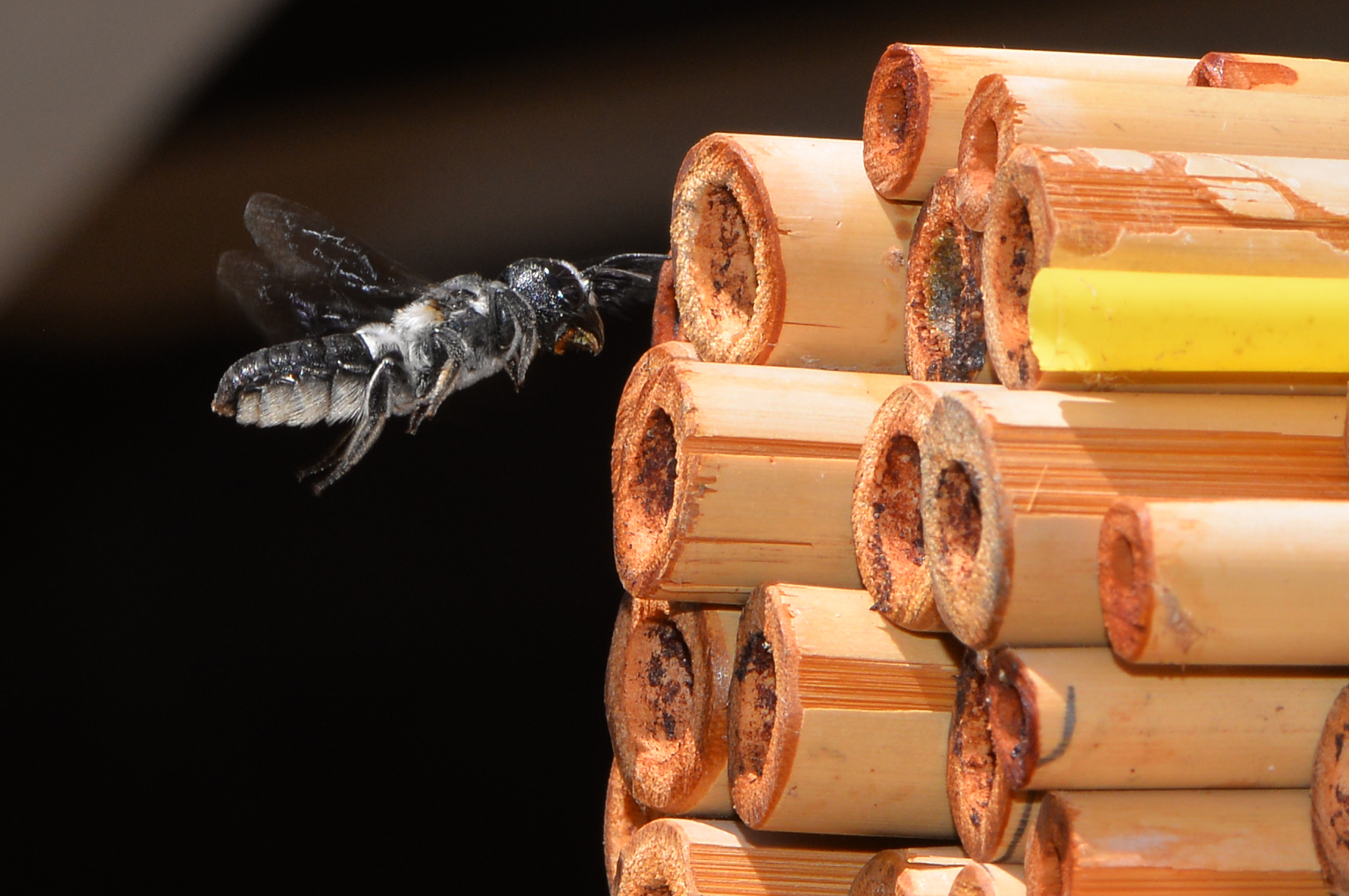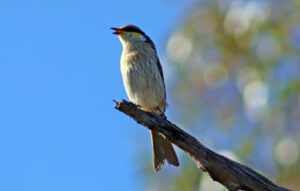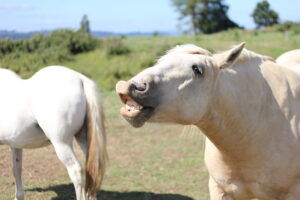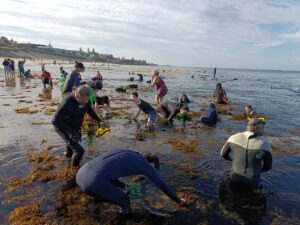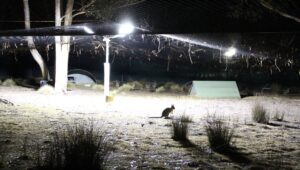Humans are a social species. Whether it’s with work colleagues, friends or a partner, we’re hard-wired to connect. But where does our sociability come from and are other animals as social as we are?
Flinders University PhD student Lucas Hearn is studying the social evolution of a native Australian bee.
Amphylaeus morosus is part of the Colletidae family. Out of more than 2000 species, it’s the only one known to be social instead of flying solo.
However, A. morosus only started displaying social behaviour relatively recently. And it’s got the attention of Australian scientists because the display of social behaviour is considered to be a major evolutionary transition.
WE BEE-LONG TOGETHER
While A. morosus may be new to social living, other insects are seasoned experts.
Honey-bees are one of the best-known examples. They have huge, efficient colonies of non-reproducing workers and guards who all serve a single, reproducing queen.
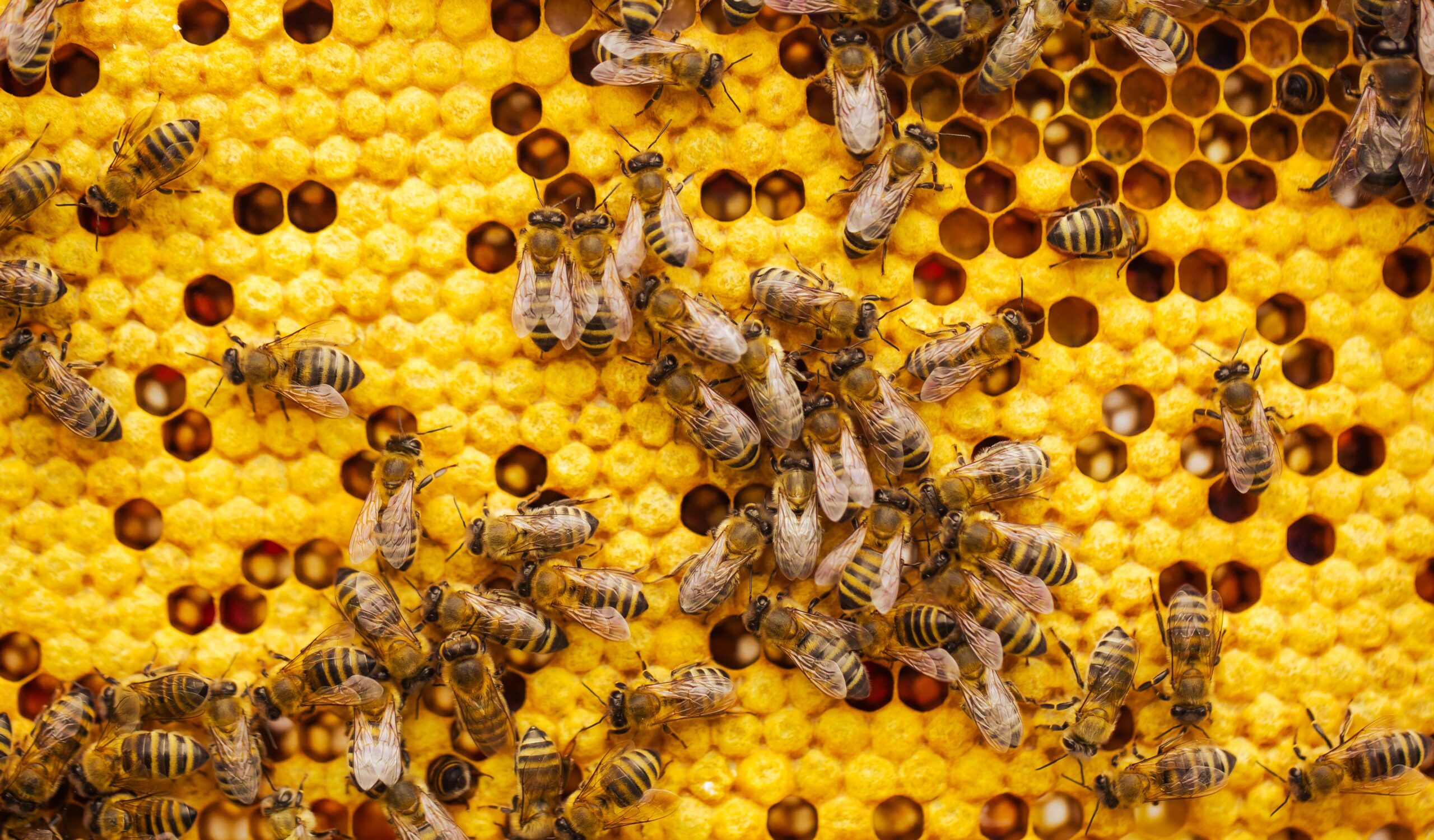
Lucas says A. morosus behaves in a similar way but on a much smaller scale. One female lays all the eggs, while another female guards the nest.
Here’s where it gets weird. The non-reproducing female can reproduce but doesn’t. Instead, she stays in the nest to help out and defend. Sort of like a nanny who just happens to have a fantastic one-two combo.
“Normally, you would expect the two females to share reproduction and both help out in defensive roles,” says Lucas.
“A. morosus suggests that quite complex social behaviour can evolve early in the jump from solitary to social living.”
the hive mind
A. morosus is a forest-dwelling bee. Lucas and his team studied their nests in the Dandenong Ranges, east of Melbourne. For their research, the team collected data about the number of females in each nest and the brood.
“From there, we looked into differences and similarities in the genetic code between the females to determine if they were full sisters, completely unrelated or anything in-between,” says Lucas. “We found they were quite highly related.”
Bee family structures are more complicated than ours. In human reproduction, a child gets half its DNA from each of its parents. If you have a brother or sister, they share roughly 50% of your DNA.
In bees, female workers born of the same queen share 75% of the same genetics. This makes them “super sisters”.
If you’d like a deeper dive into how this works, check out the below video. Things do get pretty complicated though, you have been warned.
leave me bee
If you’re an introvert, you may be wondering if this part of evolution is more effort than it’s worth.
“There’s a range of benefits for social living, including the ability to defend a resource from predators and parasites,” says Lucas.
“In the case of A. morosus, we found there’s a huge benefit to having at least one female in the nest at all times to protect against invaders.”
This seemingly altruistic behaviour of helping family instead of reproducing may seem counterintuitive. After all, if you’re on guard duty, you’re not propagating your own genes.
not all it’s cracked up to bee
If being social has benefits, then why are most animals solitary?
Theo Evans, an Associate Professor at UWA’s School of Biological Sciences, says being social, like anything else, can have its drawbacks.
“If an animal is living in a social environment, it means diseases are easier to catch, you have competition for resources and you are more detectable,” says Theo.
“These three costs are sufficient to keep the vast majority of animals solitary.”
If being solitary is the norm, that means A. morosus needs a very good reason to move in together.
“Evolution is about passing on your genes,” says Theo. “Anything and everything is favoured if it increases the chance of the genes getting to the next generation.”
If you think about it that way, the non-reproducing sister’s behaviour makes more sense. She shares so much DNA with her sister and her sister’s progeny that it’s worth the risk of disease and resource scarcity.

to be or not to bee
It may seem odd to weigh up the cost-benefit of social structures, but we see it in other animals too.
“A lone wolf will never take down a moose,” says Theo. “But a pack of 15 wolves can.”
The same applies to people. Humans are slow, squishy and generally unable to defend ourselves. Yet we’re highly social and have taken over the planet in ways that are both awe-inspiring and troubling. This suggests we have more to gain from being social than solitary.
While A. morosus is a long way from living in a highly complex social society, who knows how they may evolve over the next million years or so.
“As with any new relationship,” says Lucas, “it’s a good idea to take it slow at the start.”



